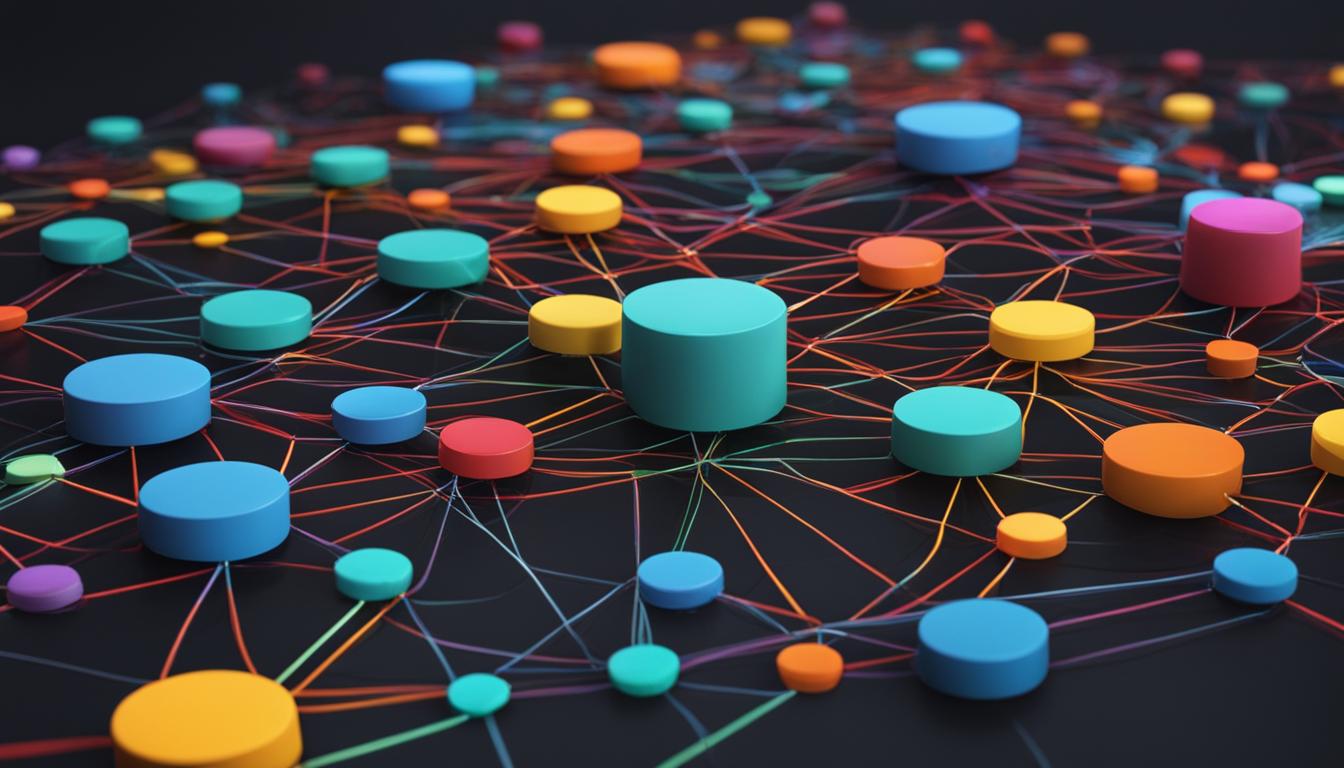The Internet of Things (IoT) integration has revolutionized the way we connect and communicate with devices. In this era of interconnectedness, IoT protocols and communication play a crucial role in enabling seamless connectivity, data exchange, and overall IoT integration. By leveraging the power of IoT protocols, businesses can optimize their IoT deployments and unlock the full potential of IoT devices.
IoT protocols act as the foundation for IoT communication, facilitating the transmission of data between devices. With the rapid growth of IoT, the number of IoT connections is projected to reach 30.9 billion by 2025. As organizations embrace IoT technologies, understanding the different IoT protocols becomes imperative for successful deployment.
Key Takeaways:
- IoT protocols are essential for enabling connectivity and data exchange within the IoT ecosystem.
- There are various IoT protocols available, each offering unique capabilities and suitability for specific deployments.
- The choice of IoT protocol depends on factors like geographic location, power consumption needs, and overall budget.
- IoT devices can connect and communicate through low-power short-range networks or low-power wide-area networks (LPWAN).
- Understanding and selecting the right IoT protocol is crucial for seamless integration and efficient IoT deployments.
IoT Protocols for Different Environments
When deploying IoT systems, the selection of appropriate protocols is crucial. Several factors influence the choice of IoT protocols, including geographic locations, power consumption needs, physical barriers, and the overall budget of the deployment.
For short-range communication within homes and offices, Bluetooth and Wi-Fi are well-suited options. These protocols offer reliable connectivity and high data transfer rates, making them ideal for smart home applications.

Conclusion
The successful implementation of the Internet of Things (IoT) relies heavily on robust IoT protocols, efficient IoT communication, seamless IoT connectivity, and effective IoT integration. These elements are crucial for enabling the exchange of data and achieving the full potential of the IoT ecosystem.
With a wide range of IoT protocols available, businesses have the flexibility to choose the most suitable protocol based on their specific needs and requirements. Each protocol offers unique features and advantages, catering to different environments and applications. Whether it’s short-range communication within a home, long-range connectivity for remote devices, or low-power networks for efficient IoT deployments, there is an IoT protocol available to meet every demand.
By understanding the intricacies of different IoT protocols and their benefits, organizations can make informed decisions when implementing IoT solutions. This knowledge allows businesses to achieve seamless integration across various devices and systems, leading to improved data management and enhanced operational efficiency.
In conclusion, the proper deployment of IoT protocols, along with effective IoT communication, connectivity, and integration, paves the way for a connected world where devices can communicate seamlessly and operate harmoniously. By embracing IoT protocols and leveraging their capabilities, organizations can unlock immense opportunities and harness the power of connected devices.
FAQ
What role do IoT protocols play in the Internet of Things ecosystem?
IoT protocols facilitate communication and data exchange between devices in the IoT ecosystem.
How many IoT connections were there in 2020?
According to IoT Analytics, there were 11.7 billion IoT connections in 2020.
What is the estimated number of IoT connections by 2025?
The number of IoT connections is estimated to reach 30.9 billion by 2025.
What factors influence the choice of IoT protocols?
Factors such as geographic location, power consumption, physical barriers, and cost influence the choice of IoT protocols.
What are some common IoT protocols?
Common IoT protocols include AMQP, Bluetooth, Cellular, CoAP, DDS, LoRa, MQTT, Wi-Fi, and Zigbee.
What are the specific communication capabilities of Bluetooth and Wi-Fi?
Bluetooth and Wi-Fi are well-suited for short-range communication within homes and offices.
What is Zigbee used for?
Zigbee offers low power consumption and is ideal for wireless control in smart home applications.
What networks provide high bandwidth and reliable communication over longer distances?
Cellular networks, such as 4G/LTE and 5G, provide high bandwidth and reliable communication over longer distances.
What are low-power short-range networks suitable for?
Low-power short-range networks, such as Bluetooth, NFC, Wi-Fi, Z-Wave, and Zigbee, are suitable for smaller environments like homes and offices.
What are low-power wide-area networks (LPWAN) used for?
Low-power wide-area networks (LPWAN) are used for IoT devices that require extensive coverage, providing long-range communication capabilities.
How can organizations achieve seamless integration across devices and systems?
By understanding different IoT protocols and their advantages, organizations can make informed decisions when implementing IoT solutions.
Source Links
- https://www.techtarget.com/iotagenda/tip/Top-12-most-commonly-used-IoT-protocols-and-standards
- https://research.aimultiple.com/iot-communication-protocol/
- https://azure.microsoft.com/en-us/solutions/iot/iot-technology-protocols
- Regulatory and Compliance: Pioneering the Future of Saudi Arabia’s Dedicated Cargo Airline - December 21, 2024
- Financial Strategies: Fueling the Growth of Saudi Arabia’s Dedicated Cargo Airline - December 20, 2024
- Operational Excellence: Ensuring Competitive Edge for Saudi Arabia’s Dedicated Cargo Airline - December 19, 2024






